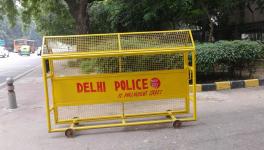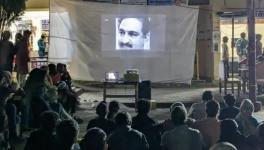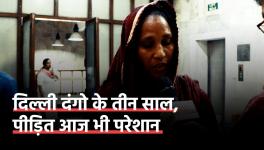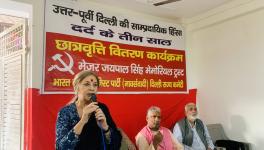Shaheen Bagh Protest: Was it Really Brainchild of the BJP?
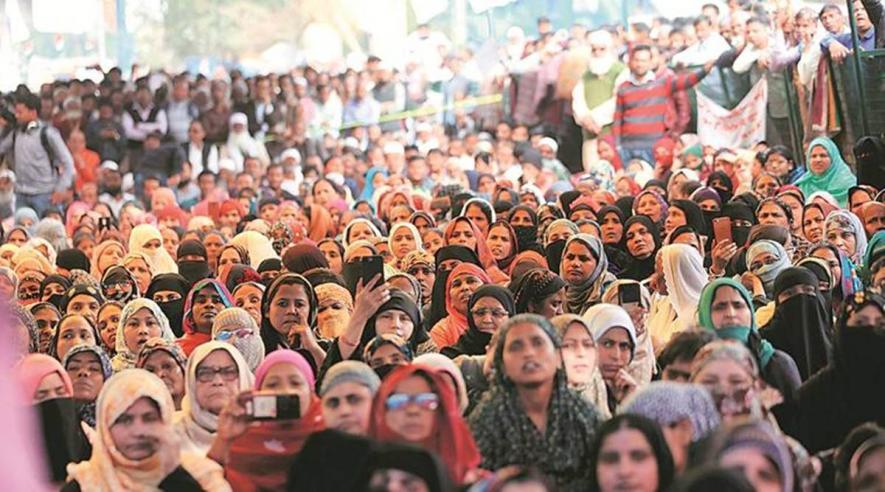
Image Courtesy: The Indian Express
Aam Aadmi Party’s claim that Shaheen Bagh’s anti-CAA protests were scripted by the BJP has shocked people. It is the first time anyone has made such a ludicrous claim. Until now it was believed, and quite rightly, that the protests were a natural culmination of BJP’s strategy to disenfranchise the Muslim community in the country. Muslims had no option but to come out and protest or be completely marginalised in their and their forefathers’ land.
AAP spokesperson Saurabh Bharadwaj said on 17 August said that “pro-democracy” people were feeling “cheated and manipulated” as the “BJP pulled the strings” of the Shaheen Bagh protests. Bharadwaj further said, “The topmost leadership of the BJP scripted each and every step of the Shaheen Bagh protest. They decided who will say what, who will attack whom and who is going to do the counter-attack. All these things were planned and well scripted.”
If that was not enough, he said, “A group of 10 women started the blockade and the Delhi Police allowed it to happen. The same police do not allow protests by students, teachers, farmers. It did not prevent installation of tents. Over 1 lakh vehicles faced inconvenience daily… Shaheen Bagh pe logon ki duty lagti thi, people used to come and sit, maintaining a proper schedule. Every morning, some people used to come, only to go home in the afternoon, eat food, take rest and then again return in the evening.”
The Shaheen Bagh protest, which was emulated in the form of women-led protests at hundreds of places across the country, had started in response to the passage of the Citizenship (Amendment) Act, 2019 (CAA) on 11 December 2019. The immediate cause of protests at Jamia Millia Islamia and Shaheen Bagh, a poor neighbourhood in South Delhi with a predominantly Muslim population, was the police attack on students of the central university who were out on the roads protesting against the CAA. A number of students were beaten badly by the police that stormed the university, including its library, where a large number of students were studying.
The immediate provocation for Shaheen Bagh was the disproportionate use of force by police on Jamia students, many of whom come from Shaheen Bagh and surrounding localities close by. A large number of women gathered on the Sarita Vihar-Noida Road in Shaheen Bagh and sat on indefinite protest demanding action against police officials who used force against the students. They demanded revocation of CAA and the National Population Register (NPR). While the protesters were mainly Muslim women, they got support from a wide spectrum of population from across the national capital. The protests were suspended by the women on 24 March, when the national lockdown was announced by the central government in the wake of the Covid-19 pandemic.
Apparently, the trigger for AAP’s outlandish claim was a small-time local activist, Shahzad, joining the BJP with a few of his friends. However, not many people in the locality know who Alam is. Until recently, he was associated with the Rashtriya Ulema Council, a political outfit with little or no fan-following among the Muslim community or the locals. He has jumped many ships and if his photos with political leaders are to be believed, he has been in the search of greener pastures for quite some time.
Bhardwaj’s incendiary claim that the protest was a BJP project has shocked those who saw the protest unfold at Shaheen Bagh, many of whom regularly attended the gatherings and supported it. They are incensed by Bhardwaj’s claims that the protesters raised anti-India and pro-Pakistan slogans. According to Zartab Haider Jafri, who observed the events unfold since last December, “Indian Muslims have become punching bags for all political parties. They have been used, molested, killed, raped, attacked, shamed, cursed and made scapegoats to achieve political gains.”
He adds, “Shaheen Bagh was a people’s movement started and kept alive by the brave hearts who vehemently rejected all political parties and kept the secular identity of the protest intact and didn’t allow any political party to use the platform to run their agenda. It was the courage, will and belief in the Constitution which motivated the protesters and kept their morale high amidst all the pressure from anti-constitutional and self-centred groups and individuals.”
Faroagh, a student of Jamia Millia Islamia, says that the Shaheen Bagh protest was a “people’s movement” where everyone was doing their best to support students. In these movements it is very easy to label yourself as an “activist” because nobody minds it. In such circumstances, an individual is treated as a leader due to the unorganised structure of the protest movement. Faroagh feels that it is deplorable that AAP has associated the protest with the BJP, against whose anti-Muslim policies the entire protest was launched in the first place. He views the AAP’s claims as the party’s anti-Muslim stance, which has been in full display for quite some time.
The AAP did not just remain a mute spectator during the entire anti-CAA movement, it did nothing to save Muslims from the marauding mobs during the anti-Muslim riots that took place in February this year. “While Delhi was burning, Muslim activists went to Chief Minister’s [Arvind Kejriwal] house to protest his silence over the violence. He not only refused to meet them but asked police to use water cannon and detain as many as possible. So when AAP terms Shaheen Bagh protest as ‘BJP’s plan’ I am not shocked—rather happy that my understanding was correct,” Faroagh says.
Noor Alam, a student from Shaheen Bagh area points out that the protest was organised and led by women and that men played a very small role in those three and half months, the first of their kind in India’s history. Nor was it organised or led by one woman, but by thousands who spent their time, money and energy to make it succeed. Men never enjoyed leadership in the entire period. When he heard the news of a “group” of Shaheen Bagh protesters joining the BJP, Noor decided to dig deeper and realised that one Shahzad, who has joined the BJP, is being called the main organiser of the Shaheen Bagh protest by the media. “I am at my wits’ end, as I was among the protesters and knew almost all the people there, but I neither heard this person’s name nor came across him. It would have certainly hurt me had a protester have joined the BJP. Thankfully this is not the case and Shahzad was never a part of the protest,” says he.
However, many say that if some people from Shaheen Bagh have joined the BJP, there is nothing to complain about. M. Ghazi, a cleric, says, “What’s wrong if someone actually joins the BJP or any party.” In this point of view, AAP has shown it is no different from the saffron party and so Muslims should be in all political parties to have their voices heard.
The women who managed the Shaheen Bagh protests were really serious about their cause. Every effort was made to defame them and their protest, including accusations that they are paid agitators. However, the protest did give some local satraps the opportunity to try and become leaders. Shahzad Ali, people in Shaheen Bagh say, is not the only one who has tried to use the opportunity, there may be many. “BJP, AAP and Congress, all have used the Muslims to gain political mileage. Muslims need to create political understanding. This will help the community prepare a better India where future generations will be able to live amicably,” Ali says. He says any of this will happen only through education that will empower India’s Muslims. No surprise, after all, the Shaheen Bagh protests were meant to ensure a better and brighter future for the nation.
The author is a writer and columnist. The views are personal.
Get the latest reports & analysis with people's perspective on Protests, movements & deep analytical videos, discussions of the current affairs in your Telegram app. Subscribe to NewsClick's Telegram channel & get Real-Time updates on stories, as they get published on our website.











